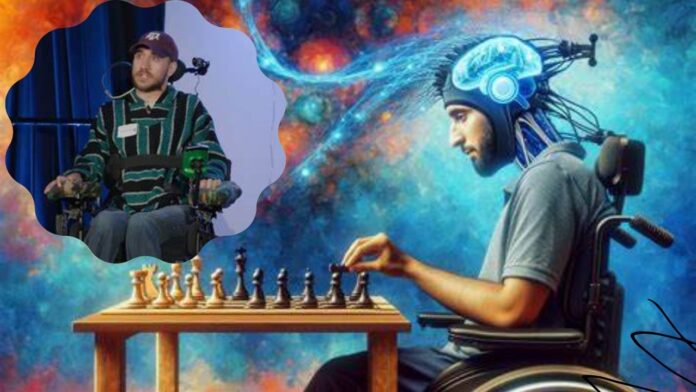Neuralink Patient Plays Chess with Mind-Controlled Cursor: A Glimpse into the Future
Neuralink brain implant equipped in anonymous patient astounded viewers by demonstrating the extraordinary capabilities of this cutting-edge technology in a groundbreaking livestream event. The patient’s identity remains confidential, adding an air of mystery to the proceedings.
The Neuralink Implant: A Brief Overview
Developed by Elon Musk’s company, Neuralink, this brain implant represents a bold leap toward bridging the gap between humans and machines. The implant consists of a network of ultra-thin electrodes surgically embedded into the brain. These electrodes serve a dual purpose: recording neural activity and stimulating specific brain regions, enabling bidirectional communication.
The Chess Game: Mind Over Matter
During the livestream, the patient sat before a computer screen, eyes fixed on a virtual chessboard. But instead of relying on a conventional mouse or keyboard, they harnessed the power of their thoughts to manipulate the cursor. Here’s how this remarkable feat unfolded:
- Electrode Implants: The Neuralink implant detected neural signals associated with the patient’s intention to move the cursor. The computer wirelessly received these signals, serving as a direct bridge between mind and machine.
- Real-Time Cursor Control: As the patient focused their mental energy on specific squares of the chessboard, the cursor responded in kind. Their thoughts translated seamlessly into precise movements on the screen.
- Strategic Gameplay: Engaging in a cerebral battle, the patient played chess against an AI opponent. Every move—each calculated, each strategic—was executed without a single physical gesture. It was a game of wits played entirely within the confines of the mind.
Challenges and Triumphs
While the demonstration left spectators in awe, it also underscored some inherent challenges:
- Precision: Achieving fine motor control through neural signals remains a work in progress. Occasionally, the patient unintentionally nudged the cursor due to the system’s sensitivity.
- Training: The patient underwent rigorous training to adapt to this novel interface. Learning to think in terms of cursor movements required mental agility and persistence.
This glimpse into the future hints at a world where our thoughts can directly manipulate technology—an exciting prospect that blurs the boundaries between mind and machine.1



















